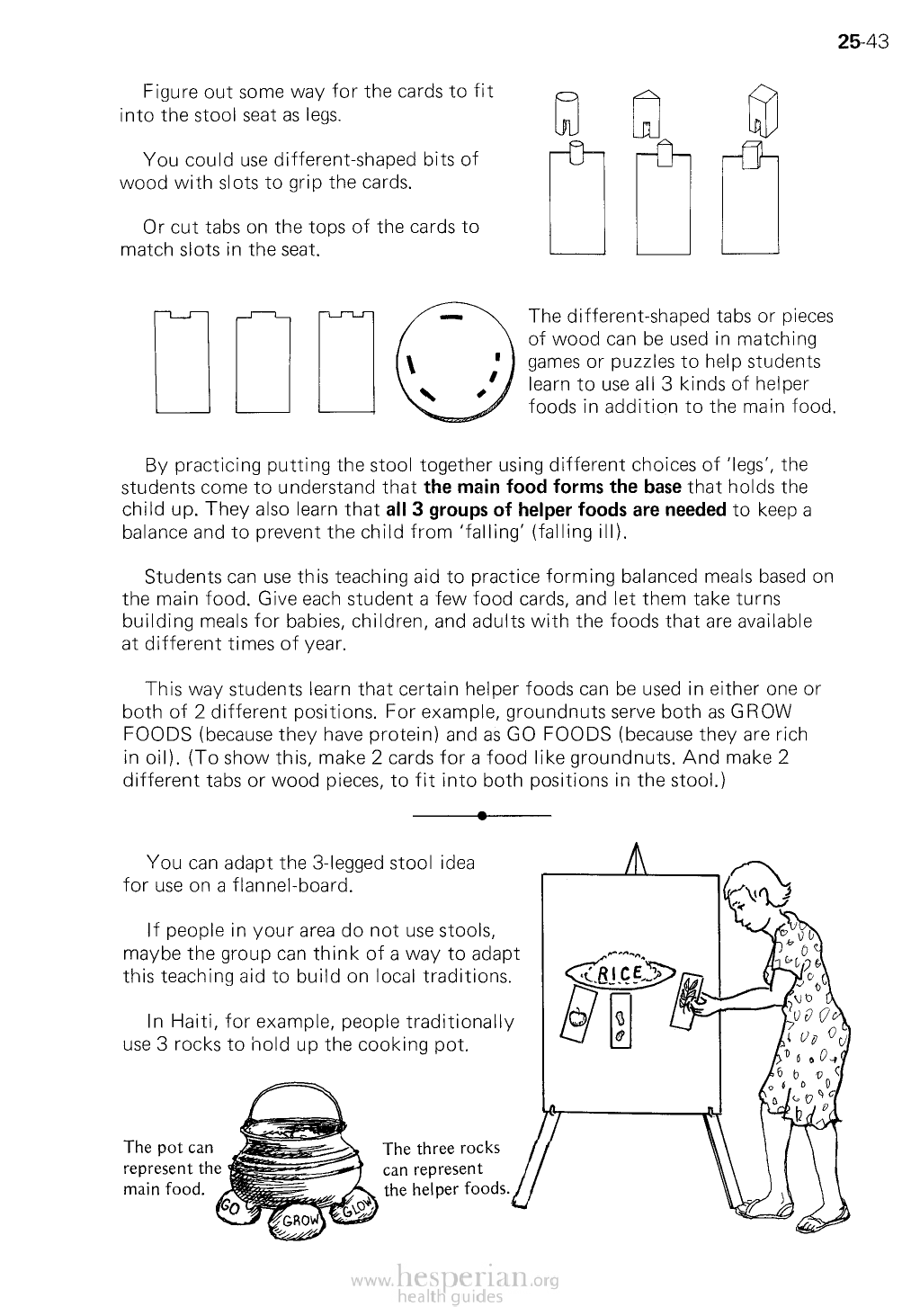
Figure out some way for the cards to fit
into the stool seat as legs.
You could use different-shaped bits of
wood with slots to grip the cards.
Or cut tabs on the tops of the cards to
match slots in the seat.
25-43
The different-shaped tabs or pieces
of wood can be used in matching
games or puzzles to help students
learn to use all 3 kinds of helper
foods in addition to the main food.
By practicing putting the stool together using different choices of ‘legs’, the
students come to understand that the main food forms the base that holds the
child up. They also learn that all 3 groups of helper foods are needed to keep a
balance and to prevent the child from ‘falling’ (falling ill).
Students can use this teaching aid to practice forming balanced meals based on
the main food. Give each student a few food cards, and let them take turns building
meals for babies, children, and adults with the foods that are available at different
times of year.
This way students learn that certain helper foods can be used in either one
or both of 2 different positions. For example, groundnuts serve both as GROW
FOODS (because they have protein) and as GO FOODS (because they are rich in
oil). (To show this, make 2 cards for a food like groundnuts. And make 2 different
tabs or wood pieces, to fit into both positions in the stool.)
•
You can adapt the 3-legged stool idea
for use on a flannel-board.
If people in your area do not use stools,
maybe the group can think of a way to adapt this
teaching aid to build on local traditions.
In Haiti, for example, people traditionally
use 3 rocks to hold up the cooking pot.
The pot can
represent the
main food.
The three rocks
can represent
the helper foods.